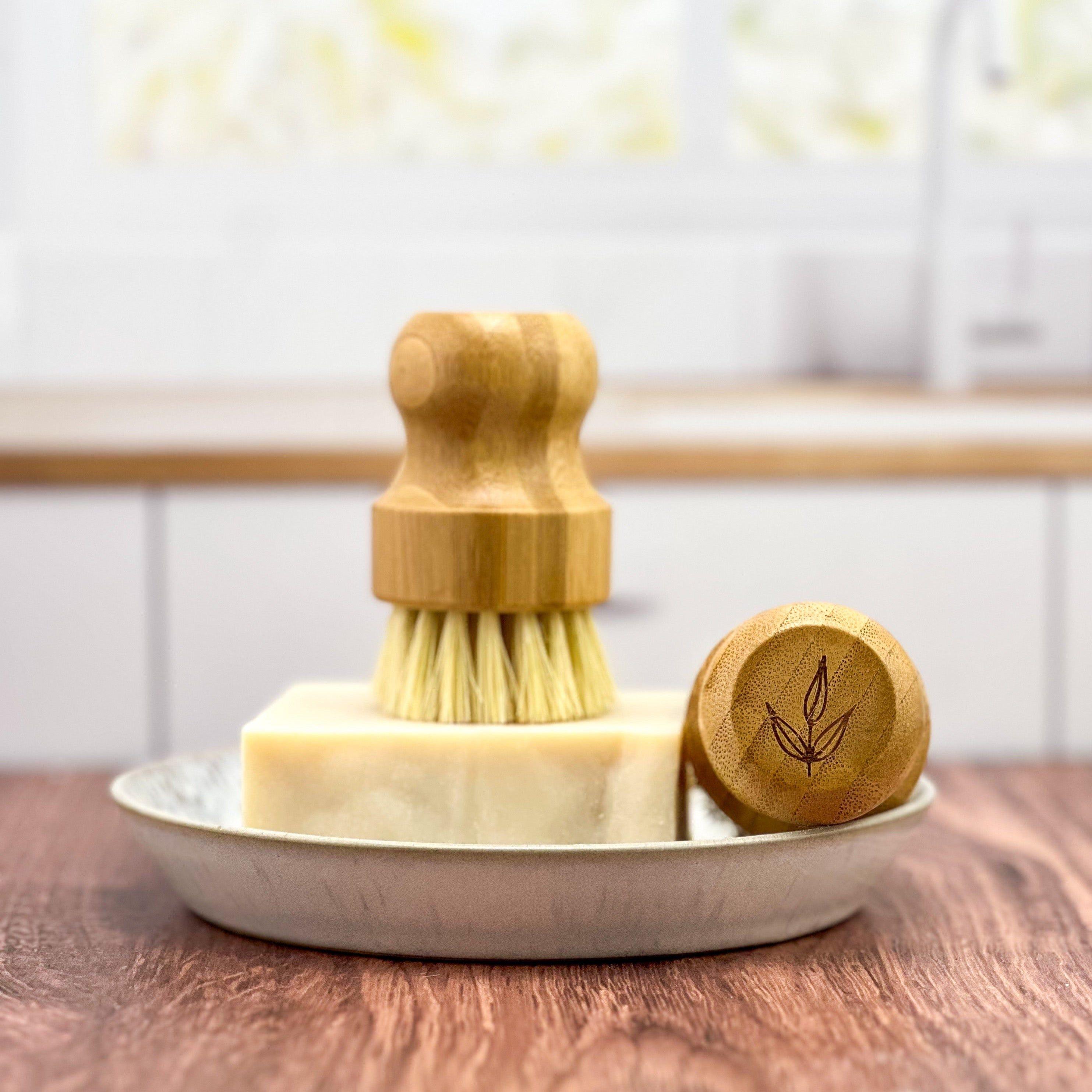When it comes to dish soaps, there is a TON of Sneaky Stuff. What follows are the brands that you ask about most often.
365 dish soaps have moved from Okay Stuff to Sneaky Stuff, thanks to the addition of sodium laureth sulfate, cocamidopropyl betaine, and benzisothiazolinone.
Aunt Fannie’s dishwashing liquid contains cocamidopropyl betaine, although the rest of their line of cleaning products is Good Stuff!
When I wrote the first version of the dish soap safety review (back in 2010!), Biokleen was tight-lipped about the specific ingredients they use. (“Unfortunately, our surfactants are a proprietary blend and therefore we do not disclose that information to the public.”) Biokleen did assure me, however, that their detergent is free of both SLS and SLES and that they don’t use synthetic fragrances or dyes. They sent me their material safety data sheet (MSDS) and their surfactant blend is not considered hazardous or possibly carcinogenic. Given all of this information, I felt that Biokleen should be considered Good Stuff. Unfortunately, Biokleen recently changed their formula and, to their credit, chose to disclose all ingredients. These include cocamidopropyl betaine, lauramine oxide, and something called C10-16 alkyl glucoside, about which I can’t find any information.
Caldrea dish soaps contain methylisothiazolinone, benzisothiazolinone, and synthetic fragrance.
Dapple dish soap uses alkyl polyglucoside as a surfactant, which is safe, but it also contains tetrasodium iminodisuccinate (a C on EWG), synthetic fragrance (although they specify that it’s “made from ingredients consistent with the guidelines of the Natural Products Association”), and benzisothiazolinone (definitely Bad Stuff). When we tried to get more info from Dapple on their fragrance, we got no response (via phone or email).
Eco-Max dish wash contains SLES and cocamidopropyl betaine.
Earth Friendly Products used to list the ingredients in their ECOS Dishmate soap as just “water, salt, organic grapefruit oil, and 100% natural anionic coconut kernel oil-based surfactant.” They have recently started disclosing all of their ingredients, which include cocamidopropyl betaine, sodium coco-sulfate, cocamidopropylamine oxide, phenoxyethanol, and methylisothiazolinone. Super sneaky!
Grab Green changed their formula, and their dish liquid now contains sodium laureth sulfate and cocamidopropyl betaine.
Honest Company’s Honest Dish Soap has changed their ingredients for the better since the original version of this guide. But it still contains sodium benzoate, cocomidopropylamine oxide, phenoxyethanol, sodium coco-sulfate, and cocamidopropyl betaine.
J.R. Watkins foaming dish soap has a cool application process, but contains all the standard Sneaky ingredients, including synthetic fragrance.
Method dish soap uses synthetic fragrance and color (this one is free of phthalates), and also contains synthetic preservatives and methylisothiazolinone.
Mrs. Meyers Clean Day’s PR company sent me bottles of all of their dishwashing liquids, hoping to have it reviewed on this site. While I did in fact use all four bottles, I won’t buy or recommend Mrs. Meyers. They are indeed scented with essential oils, as the label claims, but they also contain synthetic fragrances (although a Mrs. Meyers rep assured me they are free of phthalates)–in addition to methylisothiazolinone and benzisothiazolinone.
Sapadilla Lovely Liquid Dish Soap contains cocamidopropyl betaine.
Shaklee is a brand that we are asked about often. Unfortunately, their dishwashing liquid contains Poly(oxy-1,2-ethanediyl), .alpha.-sulfo-.omega.-hydroxy-, C10-16-alkyl ethers (yes, that’s one ingredient!), which may be contaminated with carcinogenic 1,4-dioxane. It also contains tetrasodium EDTA and C10-16-alkyl glycosides, both of which EWG rate a C.
Trader Joe’s doesn’t disclose any specifics about their dish soap, but we know it has artificial colors.


130 comments
Stephanie
What a great article. Thank you for all the hard work and research you do! What do you think of ECOS and Planet dishwashing soaps?
Maia James
Yes, they seem like Good Stuff!
Sandra
Hi Maya! Thanks for the updated list. What about the brand Truly Free? I use their dish soap and was wondering what do you think about it? Thanks!
Maia James
Yes, those are naturally occurring from essential oils.
Bobby
Thanks for this honest review. Recently, we have a child and the question of how safe our household chemicals are for children has sharply become. I would like my child to come into contact only with those agents that cannot cause allergies in him, so my task was to select a new agent and it seems thanks to your article I found it. https://seabedee.org/